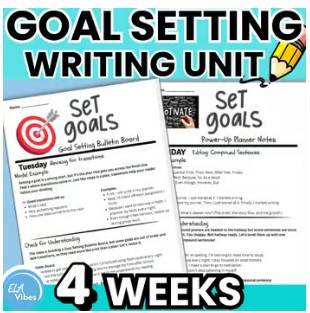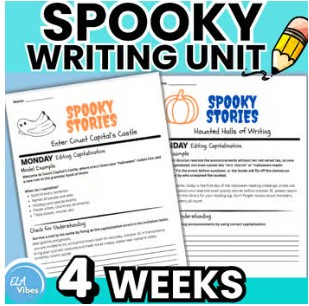Teaching writing in upper elementary can feel suffocating. It’s not just grammar, but it’s the whole writing process. There are so many pieces that connect. But when you have the right structure, tools, and prompts in place, writing becomes one of the most rewarding parts of your day. In this post, you’ll learn how to teach writing using intentional modeling and engaging activities. Whether you’re looking for writing lessons for 3rd, 4th, or 5th grade or just want students to stop saying “I don’t know what to write,” you’re in the right place.
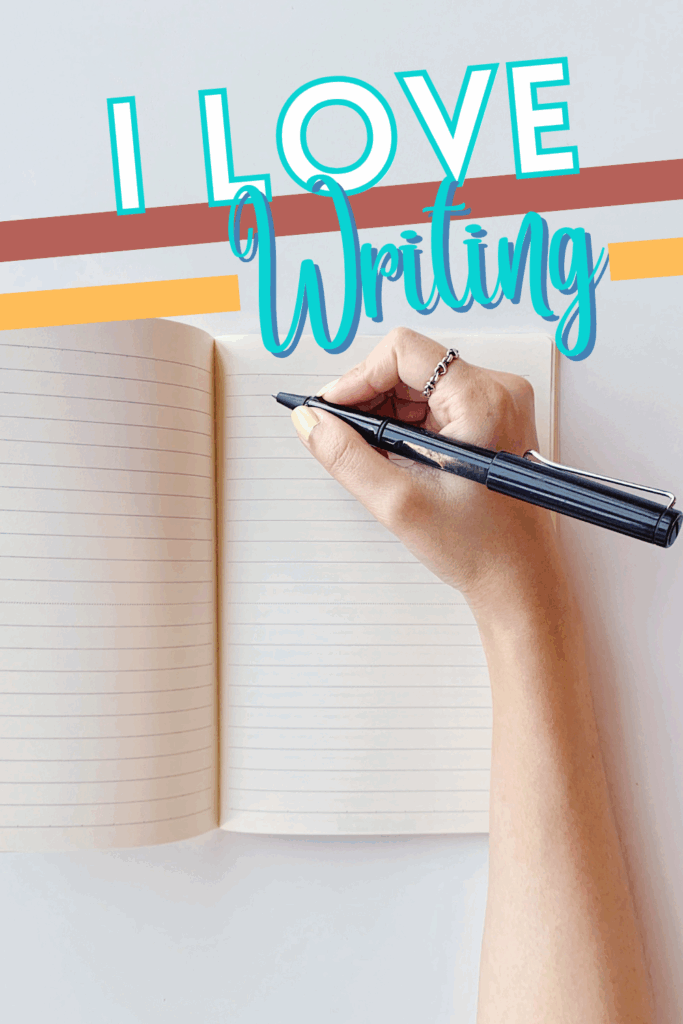
What You’ll Learn in This Post
- What strong 3rd, 4th , and 5th grade writing looks like
- How to confidently structure writing lessons
- Easy strategies to strengthen writing responses
- Engaging 3rd–5th grade writing prompts that actually work
What Does 3rd Grade Writing Look Like?
By 3rd grade, students are expected to move from simple sentences to structured paragraphs with a clear beginning, middle, and end. But don’t expect perfection. Expect growth. A strong upper elementary writer can express ideas, use basic transitions, such a first or as a result, and begin supporting opinions and ideas with reasons.
Here’s a look at how 3rd-5th grade writing can improve with intentional instruction:
Before:
I went to the park. It was fun. We had lunch. I like sandwiches.
After:
Last Saturday, my family and I spent the afternoon at the park. We started by playing an intense game of tag that left us laughing and out of breath. Afterward, we laid out a blanket for a picnic under a shady tree. My favorite part was the peanut butter sandwiches because my mom cuts them into stars.
This progress reflects development in structure, elaboration, and clarity. These are key signs that the writing lessons are sticking.
Click on the image for a free Power Writing Checklist. ⬇️⬇️
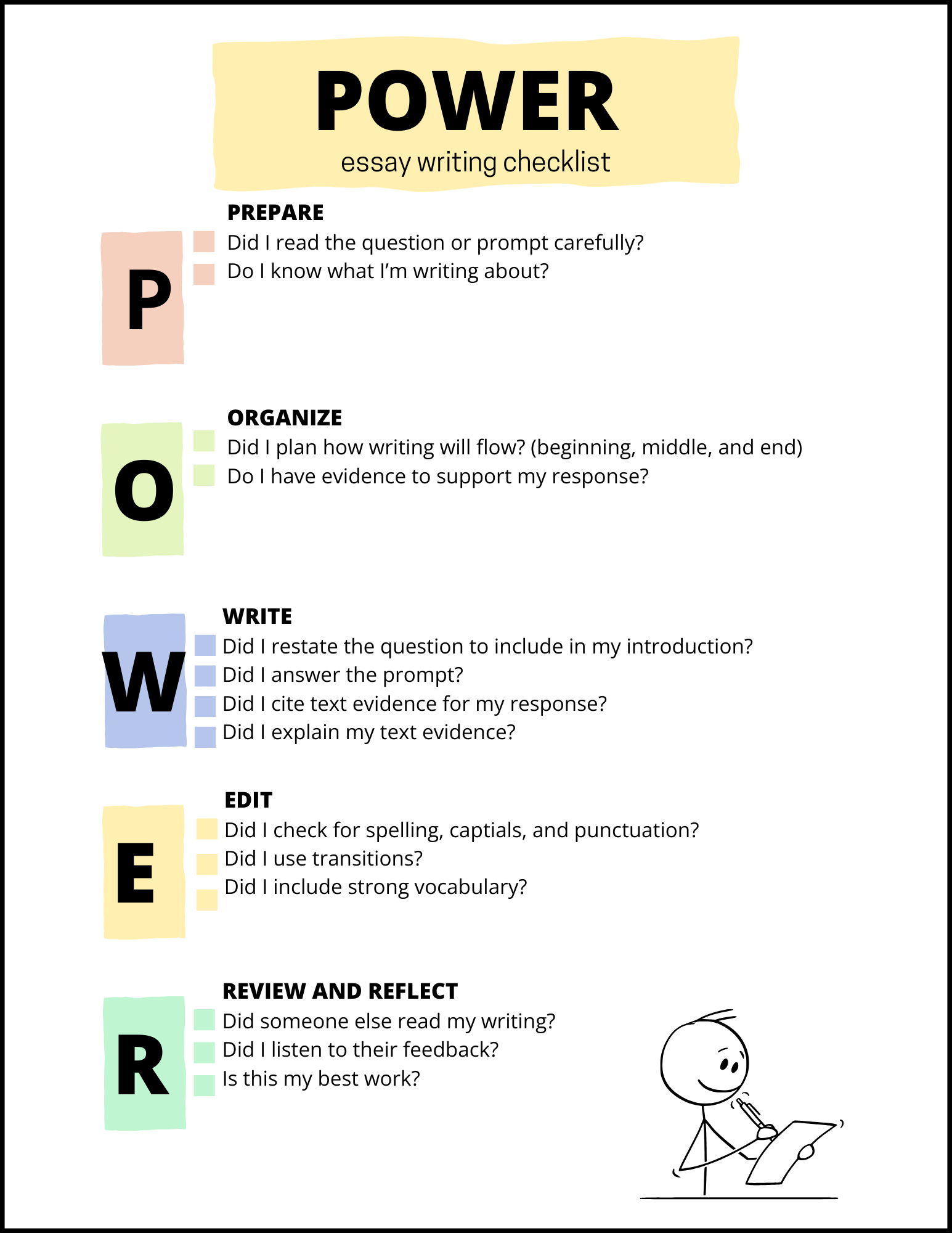
How to Teach Writing in 3rd Grade with ConfidencE
Strong writing instruction doesn’t happen by accident; it follows a pattern. Here’s how to confidently teach the writing process across upper elementary grades.
1. Model the Process
Before students ever write independently, they need to see how writing works. Use think-alouds to model brainstorming, sentence creation, and editing.
Let’s pretend we have read the article, The Science of Recycling. (this is a fictional article)
Prompt: Based on the article, The Science of Recycling, explain how recycling impacts the environment.
- What topic am I writing about?
- recycling impacts on the environment
- What is the purpose for the writing?
- to explain
- What are 2-3 ways recycling helps the environment?
- it reduces waste
- saves resources
- prevents pollution
- What are 2-3 statements from the text that support your answer to #3.
- Recycling paper reduces the number of trees cut down.
- When people recycle plastic and paper, it means fewer trees need to be cut down and less oil is needed to make new plastic.
- Recycling helps keep trash out of landfills and oceans, which means less harmful chemicals and waste end up in the air and water.
- How does this evidence support your response?
- It shows that recycling directly protects nature and keeps the Earth cleaner.
2. Use Graphic Organizers
Planning is half the battle. Use organizers that break down the thinking process.
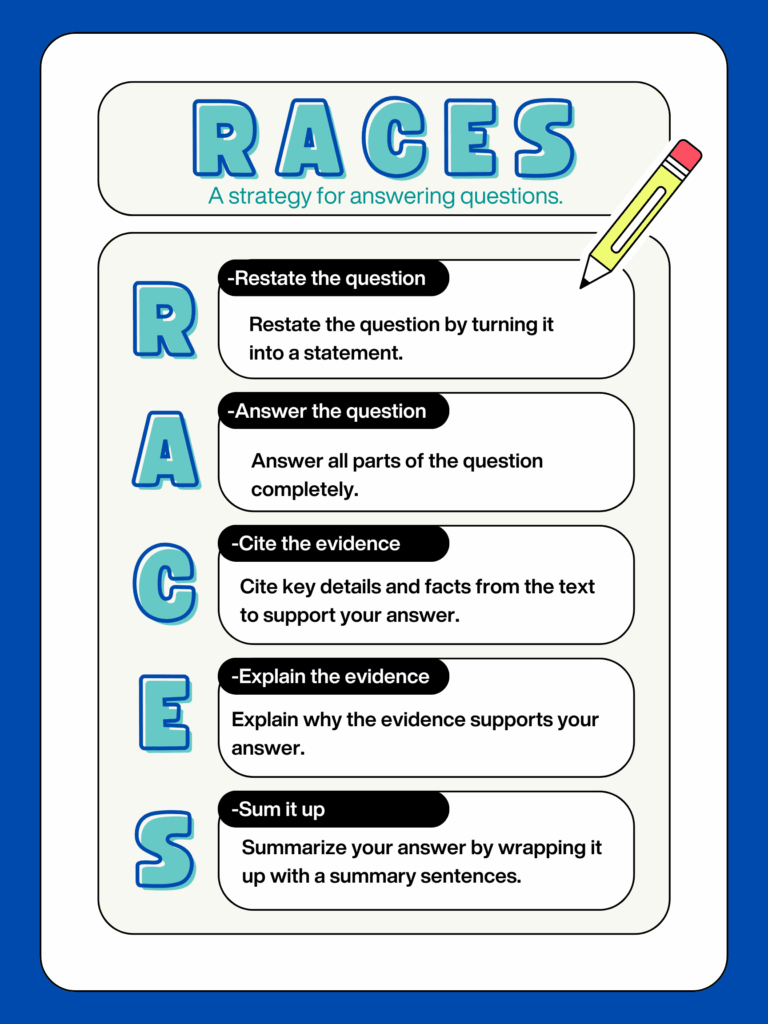
3. Try Shared and Interactive Writing
Let students help co-write a class paragraph. This builds ownership and shows how pieces fit together.
4. Offer Independent Practice with Scaffolds
Sentence starters, checklists, and anchor charts help students feel supported during solo writing time.
Need a starting point? Use these Themed Writing Prompts for 3rd–5th Grade to launch your writing block with engaging topics and structured expectations.
Strategies to Strengthen Writing Skills and Response
Even when students can form a paragraph, they often struggle to develop ideas or answer text-based prompts clearly. These strategies help bridge the gap.
✅ Use the RACE Strategy
RACE (Restate, Answer, Cite, Explain) is a student-friendly way to structure responses. Post a visual anchor chart and practice together often.
✅ Teach Sentence Expansion
Use basic starter sentences, then have students expand with details, adjectives, or cause-effect connections.
✅ Color-Code the Parts of a Paragraph
Have students highlight their topic sentence in blue, answer in pink, text support 1 in green, text support 2 in orange, explanation of the text evidence in red, and conclusion in yellow. This makes revision visual and immediate.
✅ Incorporate Goal-Oriented Writing
Use real-world goals as writing prompts. For example, write a paragraph about one habit you want to build this month.
Try these September Goal-Setting Writing Prompts to help students focus their writing while building self-awareness and structure.
Writing Prompts and Activities That Engage 3rd Graders
Use Seasonal or Thematic Prompts
Students write more when the topic feels fresh. October = spooky stories. January = New Year goals. Spring = classroom field trip proposals.
Incorporate Choice Boards
Offer 3–5 writing choices tied to one skill. Students feel empowered and are more likely to engage with the task.
Build Interactive Notebooks
Let students glue in writing prompts, draw their brainstorms, or respond to mini anchor charts. It turns writing into a tactile, visual experience.
Use Writing Around the Room
Post different prompts around the room. Students rotate, jot responses, and spark ideas from peers.
Conclusion: Build Confident Writers One Prompt at a Time
Teaching writing doesn’t require a million new ideas. It takes consistency, clear modeling, and engaging writing prompts for 3rd–5th grade. With purposeful writing lessons for 3rd, 4th, and 5th grade, students build confidence one sentence at a time.
Give your students structure, creativity, and support—and they’ll do the rest.
👉 Ready to simplify writing instruction? Grab your Back-to-School Prompts and Goal-Setting Prompts now and kickstart your writing block with confidence! Click the images for more details. ⬇️⬇️
Additional Resources to add to your toolbox
Use Visual Cues to Enhance Learning
How to Teach Summarizing to 3rd-5th Graders
Favorite items to support error analysis
*As an affiliate, I may earn a small commission if you purchase through this link at no extra cost to you. I only recommend resources I truly trust for the classroom!

